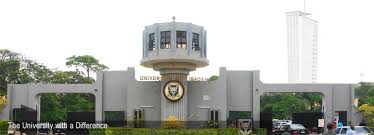
The incessant closure of public tertiary institutions due to internal strife has become very disturbing as it reflects not only the level of degeneration in the quality of our students but also the decay in the education sector. Today, three of the so-called first generation universities in Nigeria are under lock and key with their students sent home. These universities are Ibadan, Lagos and Port Harcourt.
The case of the University of Port Harcourt was the most tragic. There had been altercations between the university management and the students over a proposed increment in school fees, with the latter insisting that such decision would truncate the educational aspiration of many of them. Matters came to a head when the students took to the streets to protest the increment. As the protest became violent, the police were brought in. At the end of proceedings, two students were dead while property worth millions of naira was destroyed.
However, this state of affairs is not restricted to Port Harcourt. A couple of other universities are also under closure over protests by students complaining about poor facilities, including such basic things as water and electricity supplies that had become extremely epileptic. By the time the perennial ASUU crisis is added to all this, it is clear why our public universities are lowly rated.
While we commiserate with the families of the dead students of the University of Port Harcourt, we think it is unfortunate that the authorities of our university system have been unable to effectively communicate their policies to their students, without the habitual risk of violent resistance that sometimes leads to fatal outcomes.
Obviously, the general downturn in the economy has affected the funding of the nation’s institutions of learning at all levels, forcing them to look inwards for other sources of revenue, including payment of fees. Students have consistently opposed this because many of them are in such schools precisely because their parents could not afford the exorbitant cost of private institutions. More annoying to students is the fact that the introduction of fees on the basis of the need to augment government funding for improved infrastructure has not been justified as the quality of teaching and learning has declined. Basic facilities like electricity and water supplies have also increasingly deteriorated so much so that the worsening conditions of learning have become so manifest for everyone, except the management of the institutions, to see.
To this extent, agitations against fees increment and deplorable conditions of living and learning in tertiary institutions are understandable and those saddled with the duty of administering these schools must bear full responsibility for the lapses that have provoked the students to protest. However, students in public tertiary institutions must also wean themselves of the unhelpful culture of entitlement by which they believe they would not pay anything for their education. The reality of the moment does not support such predisposition.
Besides, no matter the level of provocation, students must learn to ventilate their grievances in a civil manner. Recourse to violence is usually counterproductive, leading, sometimes to deaths, and the destruction of existing facilities and infrastructure, while insufficiency is the object of their protest. Is it not ironical, therefore, that students will in anger destroy even those few facilities already provided for their own use? That sort of madness should not continue.
Going forward, we ask the administrators of our tertiary institutions to device a more effective strategy for communicating their policies to the students in order to stem the incessant unrest on our campuses. It is certainly unacceptable that in this age and time, violent student protest is still a major feature of our higher institutions. This must stop.
END

Be the first to comment